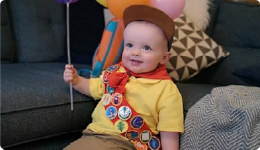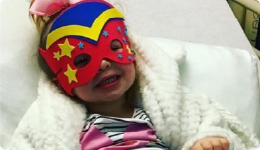 Dyspraxic children and young people can experience challenges at various times during their school day. These challenges might be noticed in the classroom, during PE and in the playground. They might also have difficulty with managing homework. Below is information about the types of tasks they can find challenging and some ideas on how to support them. CANChild has a booklet about Children with DCD: at home, at school and in the community. They also have a leaflet called Succeeding at School: Accommodations for Students with Coordination Difficulties and M.A.T.C.H. flyers for educators that you might want to share with school staff.
Dyspraxic children and young people can experience challenges at various times during their school day. These challenges might be noticed in the classroom, during PE and in the playground. They might also have difficulty with managing homework. Below is information about the types of tasks they can find challenging and some ideas on how to support them. CANChild has a booklet about Children with DCD: at home, at school and in the community. They also have a leaflet called Succeeding at School: Accommodations for Students with Coordination Difficulties and M.A.T.C.H. flyers for educators that you might want to share with school staff.
In the classroom
Handwriting
Handwriting is part of our daily life – writing a birthday card, filling out a form, making a list. For children and young people writing is an 'occupation'. For children and young people over 5, it can be something they do most days. Handwriting is one way for a child/young person to express themselves. It can help with the flow of ideas. It shows they understand what is being taught. In schools handwriting is still the main way children/young people are tested and their progress reviewed.
Being dyspraxic means co-ordinating the movements needed for handwriting is hard. Doing these movements well is tiring both mentally and physically if you have DCD. The physical side of writing, holding a pencil, sitting upright at a desk, controlling your shoulder, elbow, wrist and finger movements, can be hard. Lots of the other parts of writing are difficult for dyspraxic people too. Getting your thoughts and ideas in order and making sense can be hard if you are dyspraxic. This means that getting your ideas down onto paper can take longer which might mean you run out of time. It might mean that what you have written doesn't make sense. Handwriting is a complicated activity and any task that is complicated, needs to be taught and learnt.
Strategies
Handwriting is one of many ways to record work, show learning and express thoughts, ideas and feelings. How you support a dyspraxic child/young person depends on what they want and what they are finding most challenging. Think about your child/young person's goal - do they want their teacher to be able to read their writing or do they want to get their point across. This will help you to decide how best to meet that goal.
Here are some ideas to support handwriting using M.A.T.C.H. - choose what suits your child/young person best.
- Modify the task
- Make sure your child/young person has time for the thinking/planning part of writing as well as the doing part of writing.
- Focus on handwriting for activities that your child/young person enjoys or is motivated by for example writing a shopping list so that they/you can cook a favourite meal. The same applies in school, maybe they love science so they can write their science work but type or dictate their creative writing.
- Try different pencil/pens to find out what works best for your child/young person:

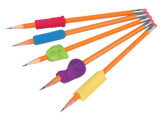 thick, thin, heavy, light, round, triangular pencil/pens
thick, thin, heavy, light, round, triangular pencil/pens- pencils/pens with/without finger rests
- pencils/pens with/without pencil grips
- 2B, HB or 2H pencils
- ball point pen, gel pen, felt tip pen, etc
- Try different types of paper:
- different textures
- different sizes
- different line spacing
- Adjust your expectations. Think about how long the task might take, are there other ways of demonstrating learning/getting a point across? See information about other ways to record learning below.
- Teach/try new strategies. There are lots of different strategies you can try - say it out loud, break the task down, check your work, ask questions, give clues, involve your child/young person in working out what works best for them.
- Change the environment.
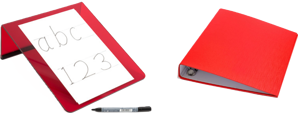 Think about reducing distractions.
Think about reducing distractions.- Think about furniture: Is it easier to write at a standing desk? Are the chair and table at the right height? Would an angled writing surface help?
- Think about space and position in the classroom. Do they need to be close to the teacher? Do they need to be at the end of a table? Would a checklist help with organisation?
- Help by understanding. Acknowledge how difficult it is and that you want your child/young person to find out what works best for them. Make sure anyone who is working with your child/young person is also aware of how challenging it is and what they can do to help. Emphasise their strengths. Acknowledge effort.
Other ways to record learning
Since writing can be tiring and difficult, using different ways of recording information might be helpful. Sometimes a mix of strategies might work. Encouraging your child/young person to use handwriting for some tasks and using other ways of recording for others, can reduce fatigue and increase confidence with getting thoughts on paper. Your child/young person could write for maths where there is less to write but use a different way of recording for creative writing. All strategies take time to learn and need practice to make them effective.
Other ways of recording learning to try:
 Speaking it out loud (and recording it) and having someone else write it down
Speaking it out loud (and recording it) and having someone else write it down- Using talk-to-text tools
- Having someone (who can read the writing) rewrite what was written to make it easier for others to read
- Draw instead of writing like in comics or graphic novels
- Typing it with or without using computer programmes to help.
It is important to start early to work out what works for your child/young person. Whatever strategy works for your child/young person having extra time is really useful too. This gives their hands and fingers time to rest but also means they have time to get their thoughts and ideas in order and have time to check what they have written too.
CALL Scotland are an organisation who have lots of information about supporting children/young people to record their work using technology to support them.
CANChild has an information you think about what might be right for your child/young person To Write or to type that is the question.
Other activities in the classroom
Dyspraxic children have lots of strengths that can help them learn in the classroom. There are some activities in the classroom which they might find difficult:
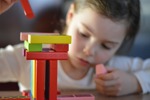 cutting with scissors
cutting with scissors- using glue
- construction activities
- planning and organising tasks, tools, resources and belongings
- moving around obstacles (people, objects and furniture)
- finding their way around school and making sense of a timetable.
Strategies:
- Modify the task. Make the task easier, use adaptive tools, use visual supports etc.
- Manage your expectations. What is the purpose of the activity/task? Focus on that rather than getting caught up in the end product being perfect.
- Allow extra time for tasks. Dyspraxic children/young people benefit from extra time to think about what they are trying to do. They also benefit from extra time to physically do the task.
- Allow your child/young person to do it their way (even if it is different from how you would do it).
- Think about the environment. Find the right time and place to work together on the task. Remove distractions.
- Use interests to support learning of new motor skills. Remember to break down the task down into steps and teach one at time.
You can find more advice and strategies about organisation skills in our Secondary School section.
In P.E and in the Playground
As DCD is a specific motor skill difference, sports and physical activity can be hard for a variety of reasons. Often, dyspraxic people prefer participating in individual sports, as the rate of play of team sports can be challenging. However, there are also many children/young people with DCD who can become exceptional sportspeople and it should not be assumed that a child/young person with DCD is unable to participate or achieve at a high level.
Dyspraxic children/young people can experience difficulties with some or all of the following:
- eye-hand coordination
- spatial awareness
- core strength and stability
- multi-step movements
- balance
- understanding and remembering the rules
- learning new motor skills
- transferring skills to new settings.
If dyspraxic children don't consistently practice new skills, you might see a temporary reduction in skill level when they start again.
Strategies
- Help your child/young person to understand the importance of physical activity in terms of health and enjoyment. Put less emphasis on competition.
- Start with games and sports that are of interest to your child/young person and encourage them to participate at home, at school and in the community.
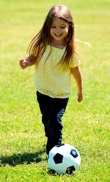 Try introducing a new sport or activity at home before they are required to do this in a group. This can prepare the child and reduce any anxiety or worries.
Try introducing a new sport or activity at home before they are required to do this in a group. This can prepare the child and reduce any anxiety or worries.- Break an activity down into more achievable chunks rather than focussing on it as a whole. Teach kicking before teaching ball control and finally dribbling.
- Modify the activity at first. For example when practising throwing and catching:
- use a large ball, beach ball or balloon
- stand close together.
- Keep the environment as predictable as possible when teaching a new skill. Introduce changes gradually after each part of the skill has been achieved.
- If the child/young person is happy for you to do so, you could try offering hand-over-hand support. This allows them to get a 'feel' of the movement and what is required of them. At same time describe clearly what you are doing, describing each step clearly.
- Offer time to share the rules of this new skill. When a child understands clearly what is required it may be easier for them to plan their movements.
- Remember to offer praise and positive feedback throughout, particularly for participating.
- Thinking about clothing and shoes too. Younger children might not need to change for P.E. but as they get older this becomes more important. Make this is easy as possible for your child/young person. Think about fastenings, you might need to teach these skills separately.
- Help teachers and coaches understand a child's strengths and challenges so they can support and encourage them to achieve success.
You can find more information and resources on:
![]() Dyspraxic children and young people can find a variety of tasks and activities at home challenging. These are usually based around self-care, and can include activities like getting showered; cleaning themselves after using the toilet; brushing their teeth and hair; getting their clothes round the right way; managing fastenings such as buttons, zips and shoelaces; and using cutlery. They may also avoid active play like playing ball games or running around. They might find craft activities and toys that need planning or are a bit more fiddly, like Lego™ difficult. They can struggle with their organisation, resulting in messier bedrooms and disorganised school bags. They can find social and emotional skills challenging. You can find out more from the CANChild booklet about Children with DCD: at home, at school and in the community.
Dyspraxic children and young people can find a variety of tasks and activities at home challenging. These are usually based around self-care, and can include activities like getting showered; cleaning themselves after using the toilet; brushing their teeth and hair; getting their clothes round the right way; managing fastenings such as buttons, zips and shoelaces; and using cutlery. They may also avoid active play like playing ball games or running around. They might find craft activities and toys that need planning or are a bit more fiddly, like Lego™ difficult. They can struggle with their organisation, resulting in messier bedrooms and disorganised school bags. They can find social and emotional skills challenging. You can find out more from the CANChild booklet about Children with DCD: at home, at school and in the community.



 thick, thin, heavy, light, round, triangular pencil/pens
thick, thin, heavy, light, round, triangular pencil/pens Think about reducing distractions.
Think about reducing distractions. cutting with scissors
cutting with scissors Try introducing a new sport or activity at home before they are required to do this in a group. This can prepare the child and reduce any anxiety or worries.
Try introducing a new sport or activity at home before they are required to do this in a group. This can prepare the child and reduce any anxiety or worries.
